balance sheet recession
description: a type of economic recession that occurs when high levels of private sector debt cause individuals or companies to collectively focus on saving by paying down debt rather than spending or investing, causing economic growth to slow or decline
22 results
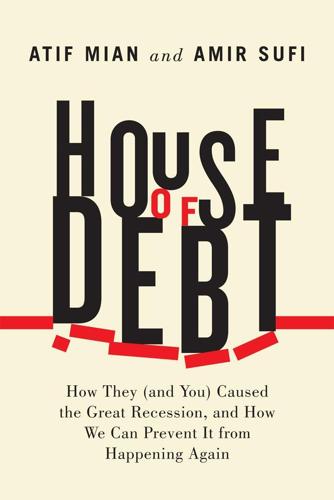
House of Debt: How They (And You) Caused the Great Recession, and How We Can Prevent It From Happening Again
by
Atif Mian
and
Amir Sufi
Published 11 May 2014
(New York: Norton, 1976); and Paul Krugman, “It’s Baaack: Japan’s Slump and the Return of the Liquidity Trap,” Brookings Papers on Economic Activity 2 (1998): 137–205. 7. Richard Koo, “The World in Balance Sheet Recession: What Post-2008 West Can Learn from Japan 1990–2005” (presentation, “Paradigm Lost: Rethinking Economics and Politics” conference, Berlin, April 15, 2012), http://ineteconomics.org/conference/berlin/world-balance-sheet-recession-what-post-2008-west-can-learn-japan-1990-2005. 8. The most cited reference to such helicopter drops of money is Milton Friedman, “The Optimum Quantity of Money,” in The Optimum Quantity of Money and Other Essays (Chicago: Aldine, 1969), 1–50. 9.
…
A closely related reason for a pullback in spending after a wealth shock is precautionary savings, as in Christopher Carroll and Miles Kimball, “On the Concavity of the Consumption Function,” Econometrica 64 (1996): 981–92. Christopher Carroll has done a large amount of work exploring how wealth distribution matters for the pullback in spending during recessions. Related here is also the work of Richard Koo on what he calls the “balance sheet recession” in Japan, where indebted firms pull back on investment to deleverage. See Richard Koo, The Holy Grail of Macroeconomics: Lessons from Japan’s Great Recession (Singapore: John Wiley & Sons [Asia], 2009). 6. See Paul Krugman, “It’s Baaack: Japan’s Slump and the Return of the Liquidity Trap,” Brookings Papers on Economic Activity 2 (1998): 137–205. 7.
…
Index Admati, Anat, 185 Agarwal, Sumit, 139 AIG, 32–33 Allen, Franklin, 94 American Housing Rescue and Foreclosure Prevention Act, 135–36 American Recovery and Reinvestment Act of 2009, 163 Amromin, Gene, 139 Anenberg, Elliot, 193n7 animal spirits view, 10, 80–81, 83, 113, 196n8 Appelbaum, Binyamin, 147 asset price bubbles, 107–8, 111–13, 149, 164–65. See also housing boom of 2000–2007 asset price collapses, 42–45, 70 austerity measures, 163 auto industry: sales rates in, 5–6; unemployment in, 61–62, 64–65 Bagehot Rule, 124 balance sheet recession, 194n5 bank bailouts, 121–34, 142, 151; FDIC loans in, 124; Federal Reserve programs in, 124–26, 154–57; protection of deposits in, 123–26, 129; protection of stakeholders in, 126–27, 131–34; Troubled Asset Relief Program (TARP) as, 136 bank crises, 7–9, 192n20; bank runs in, 123–26; current-account deficits in, 7–8; government protections in, 92–93, 119–29; household debt in, 8–9; IMF loans in, 92–95; real estate prices in, 7; short-term financing instruments in, 125; Spanish bankruptcy law and, 119–21, 184–85; stakeholders in, 121–23; stress in, 129, 130f.
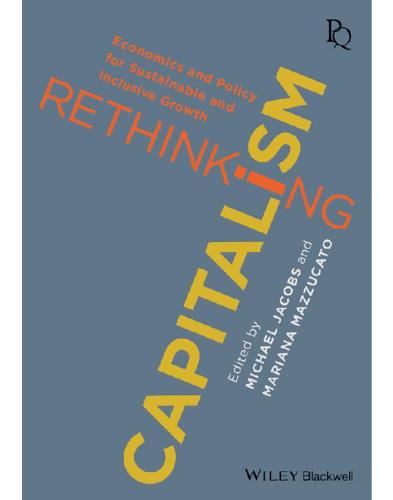
Rethinking Capitalism: Economics and Policy for Sustainable and Inclusive Growth
by
Michael Jacobs
and
Mariana Mazzucato
Published 31 Jul 2016
Godley, Money, Finance and National Income Determination: An Integrated Approach, Levy Economic Institute Working Paper No. 167, June 1996. 12 See for example H. Minsky, The Financial Instability Hypothesis, Levy Economics Institute Working Paper No. 74. 13 Richard Koo of Nomura Research has popularised this dynamic as a ‘balance sheet recession’. See R. Koo, ‘The world in balance sheet recession: causes, cure, and politics’, Economic Review, issue 58, http://www.paecon.net/PAEReview/issue58/Koo58.pdf (accessed 4 May 2016). 14 J. M. Keynes, The General Theory of Employment, Interest and Money, London, Macmillan, 1965 [1936]. 15 Krugman, ‘Deficits saved the world’. 16 State and local government budgets also moved sharply into deficit, accounting for the additional rise seen in Figure 2.
…
Historical data on the federal budget is available at http://www.whitehouse.gov/omb/budget/historicals (accessed 4 May 2016). 17 Jan Hatzius of Goldman Sachs and Paul McCulley of PIMCO, the world’s largest bond fund, both relied on Wynne Godley’s sector financial balances framework to help them see the positive role of government deficits in facilitating the deleveraging process. See for example Hatzius’ 2012 interview with the Business Insider: http://www.businessinsider.com/goldmans-jan-hatzius-on-sectoral-balances-2012-12?IR=T (accessed 4 May 2016). 18 M. Wolf, ‘The balance sheet recession in the US’, Financial Times, 19 July 2012, http://blogs.ft.com/martin-wolf-exchange/2012/07/19/the-balance-sheet-recession-in-the-us/ (accessed 4 May 2016). 19 P. McCulley, Global Central Bank Focus: Facts on the Ground, Policy Note 2010/2, Levy Economics Institute of Bard College, 2010, p. 3, http://www.levyinstitute.org/pubs/pn_10_02.pdf (accessed 4 May 2016). 20 L.
…
The foreign sector may also accumulate net financial assets (NFAs) as a consequence of government deficit spending; however, the point here is to focus on private sector balance sheets. For a full treatment, see W. Mitchell and L. R. Wray, ‘Introduction to monetary and fiscal policy operations’, Chapter 9. 23 As Wolf (‘The balance sheet recession in the US’) notes, ‘the financial balance of the private sector shifted towards surplus by the almost unbelievable cumulative total of 11.2 percent of gross domestic product between the third quarter of 2007 and the second quarter of 2009’. 24 Even those who took a more dove-ish position often emphasised the need to adopt policies aimed at balancing the budget in the medium or longer term, prompting opposition from post-Keynesians.
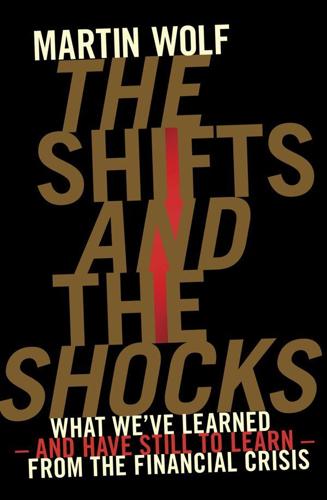
The Shifts and the Shocks: What We've Learned--And Have Still to Learn--From the Financial Crisis
by
Martin Wolf
Published 24 Nov 2015
The overall impact of such a crisis, therefore, is some weakening of supply, relative to its pre-crisis trend, but, even more, a weakening of demand relative to the weakened supply. The danger is a prolonged period of what Richard Koo of Nomura Research calls ‘balance-sheet recession’, in which the debt-encumbered private sector either tries, or is forced, to lower its debts – or, at the least, is unwilling or unable to increase them.65 What happened after the crisis to US sectoral balances – the balance between income and spending of households, corporations, the government and foreigners – offers a classic picture of an economy going into such a balance-sheet recession. Foreigners have run a surplus with the US for a long time and continued to do so, on a slightly smaller scale, following the crisis.
…
Even if the post-crisis performance of these economies was not dreadful by previous standards, the crisis proved painful and enfeebling. Why do financial crises do that? And why did the recovery stall or even go into reverse, in some cases? To answer those questions, we need to understand balance-sheet recessions. THE ECONOMICS OF POST-CRISIS DE-LEVERAGING Big financial crises cause painful recessions. Big financial crises that follow huge credit booms cause particularly painful recessions and long periods of weak growth. Professor Alan Taylor of the University of Virginia, a well-known economic historian, notes that ‘a credit boom and a financial crisis together appear to be a very potent mix that correlates with abnormally severe downward pressures on growth, inflation, credit and investment for long periods’.58 At bottom, there are five things going on in post-crisis economies.
…
However, what was done halted the immediate panic and then reversed the downswing that was well under way in late 2008 and early 2009. It succeeded in doing so even though the recession was initially as bad as it had been in 1930. Unfortunately, policymakers failed to sustain the policies required to support private-sector de-leveraging and so avoid a prolonged balance-sheet recession. Largely as a result, the recovery proved weak or even withered away altogether in 2011 and 2012. For this unhappy outcome, the Eurozone crisis was partly responsible. It turned out to be the second act of the global financial crisis. It is, accordingly, the subject of the next chapter. 2 The Crisis in the Eurozone Whatever role the markets have played in catalysing the sovereign debt crisis, it is an indisputable fact that excessive state spending has led to unsustainable levels of debt and deficits that now threaten our economic welfare.

The Price of Time: The Real Story of Interest
by
Edward Chancellor
Published 15 Aug 2022
Personal consumption hit a record high.8 The United States sported the largest current account deficit in its history – a signal that the country was spending far more than it earned.9 While Ben Bernanke at the Fed warned of a global ‘savings glut’, the United States was suffering a dearth of domestic savings. After the housing bubble burst, consumers found themselves saddled with too much debt. The United States appeared to be on the brink of a ‘balance sheet recession’, the name given to economic contractions that occur when overstretched borrowers cut spending to pay off their debts. Whereas Japan’s balance sheet recession of the 1990s saw companies reduce their leverage, now it was the turn of US households to tighten their belts.10 Research showed that those parts of the country with the steepest decline in household net worth during the housing bust experienced the sharpest decline in consumer spending.11 The authorities pulled every fiscal and monetary lever to boost consumption.
…
The resolution of Scandinavia’s banking crisis in the early 1990s showed that dealing promptly with bad debts speeded up the economic recovery. But ultra-low interest rates after 2008 enabled banks to delay this painful process, encouraging them to keep bad debts on their books. Japan’s interminable ‘balance sheet recession’ revealed the pitfalls of failing to grasp the nettle. Most Western countries now took the Japanese path. Non-performing loans proliferated on the balance sheets of banks, like cancerous cells. The problem of ‘evergreening’, or renewing, bad debts was acute in Europe. Zombie companies became commonplace.
…
Whereas Japan’s balance sheet recession of the 1990s saw companies reduce their leverage, now it was the turn of US households to tighten their belts.10 Research showed that those parts of the country with the steepest decline in household net worth during the housing bust experienced the sharpest decline in consumer spending.11 The authorities pulled every fiscal and monetary lever to boost consumption. Washington ran trillion-dollar deficits and the Federal Reserve lowered interest rates to zero and sprayed money around Wall Street. The balance sheet recession was averted. But, as Nassau Senior might have predicted, the collapse in interest rates reduced incentives to abstain from consumption or save for the future. After 2008, the US net savings rate (which includes capital consumption) turned negative for the first time since the Great Depression.

Austerity: The History of a Dangerous Idea
by
Mark Blyth
Published 24 Apr 2013
To explain this, there is no need to invoke the specter of Swedish consumers watching unlikely bond spreads while fretting about the national debt of one of the most solvent countries in the world. This is hyperbolic neoliberal fantasy looking for a set of supporting econometrics. Simply paying back debt when the economy is tanking, a classic “Balance Sheet Recession” a la Richard Koo, would suffice to explain what’s going on.129 That consumption didn’t rise is not a surprise unless you frame the problem in this absurdly counterintuitive way. That it stayed constant is the evidence for a common or garden stimulus effect—it didn’t fall despite the bust.
…
., 21–22. 124. Ibid., 23. 125. Ibid., 24. 126. Ibid., 29. The word “laxitude” is theirs. 127. Peter Englund, “The Swedish Banking Crisis: Roots and Consequences” Oxford Review of Economic Policy 15, 3 (1999): 89. 128. Ibid., 94. 129. Richard Koo, “The World in Balance Sheet Recession,” Real-World Economics Review 58 (2011): 19–37. 130. Roberto Perotti’s discussion of Sweden in “The ‘Austerity Myth’” is a vastly superior account of the Swedish experience that concludes that what made the difference wasn’t expectations—it was exports. See especially, 37–41. 131.
…
, 123, 124 General Theory, 126, 127, 145 in Germany, 195 in Ireland, 208 Keynesian economics, ix, 16, 39, 54–56, 122, 137, 140–141, 149 See also Phillips curve on austerity, 97–98, 101, 125–131 “paradox of thrift”, 8 rediscovery of, 221 Kinsella, Stephen, 61, 208 Kirkman, Geoffrey, ix Kirshner, Jonathan, 202 Koo, Richard “Balance Sheet Recession”, 211 Konczal, Mike, 212, 213 Krugman, Paul, 11, 55, 165, 207 and the euro, 78 Krups, 132 Kuronuma, Yuji, 197 Kwak, James, 11 Kydland, Finn, 157 Lagarde, Christine, 218 Landsbanki, 237 “Large Changes in Fiscal Policy: Taxes versus Spending” (Alesina and Ardagna), 173, 212 Latvia austerity in, 18, 103, 179, 216–226, 217 fig. 6.1, 221 Laval, Pierre, 202 Law, John and the national debt of France, 114 Lehman Brothers, 25, 29 leverage, 32 and banking, 25, 26, 32 of European banks, 89 ratios of, 48 liberalism, 98–101 See also neoliberalism liquidationism, 101, 119–122, 204 liquidity support, 45 List, Friedrich, 134 Lithuania austerity in, 18, 103, 179, 216–226, 217 fig. 6.1 Lloyd George, David “We Can Conquer Unemployment”, 123, 124 Lo, Andrew, 22 Locke, John, 17, 100–101 and austerity, 114–115 and the creation of the market, 105–106 as an economic revolutionary, 104–105 on taxes, 106 relationship between the market and the state, 115–122 Second Treatise of Government, 104 Long Term Capital Management.
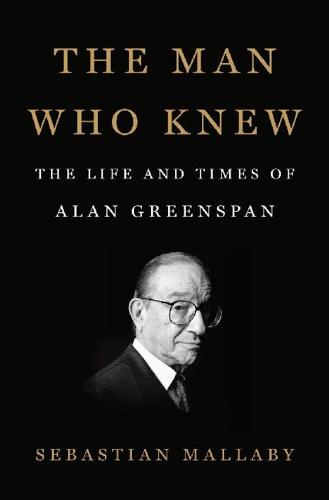
The Man Who Knew: The Life and Times of Alan Greenspan
by
Sebastian Mallaby
Published 10 Oct 2016
Their curtailment of expenditures were not so much fear induced, as financially induced.28 Half a century after Greenspan wrote these paragraphs, the world succumbed to another violent stock market decline, and economists pronounced learnedly on “balance-sheet recessions”—ones that follow a crippling destruction of wealth rather than a mere falloff in spending. The pronouncements were frequently coupled with denunciations of the Greenspan Fed: if only Greenspan had understood balance-sheet recessions and how painful they could be, he surely would have acted more decisively as the bubble of the 2000s inflated. But the truth, as revealed in Greenspan’s 1959 paper, is that he had been thinking about balance-sheet recessions for decades—in fact, he had been aware of them for longer than many of his critics had been breathing.
…
The economy was slowing not simply because the Fed was disciplining credit but because overextended banks and customers were disciplining themselves.30 Darman and the doves on the Federal Open Market Committee were turning out to be right. The United States was experiencing what economists would later call a balance-sheet recession.31 In mid-December, with the economy still weak, Treasury Secretary Nicholas Brady seized a chance to push Greenspan to ease faster. Manley Johnson, the Fed’s young vice chairman, had announced his intention to step down; and Brady sent a memo to the White House, weighing in on Johnson’s replacement.
…
In 1977, when he had returned to his consultancy after his stint at the White House, he had led the pack in pointing out how strong household balance sheets, buoyed by rising house prices, had unleashed a deluge of home-equity extraction that was driving the business cycle. Greenspan’s sensitivity to the power of finance was sufficiently developed that even the best critiques of his policy during 1990–91 do not explain where he went wrong. Looking back on the balance-sheet recession a year later, Ben S. Bernanke, the Princeton professor who had commented so thoughtfully on Black Monday, proposed a rethink of how money affected the economy: it was not just the price of credit that mattered; the health of banks and borrowers determined how much lending took place, and hence also the amount of spending and growth in the economy.

The Knowledge Economy
by
Roberto Mangabeira Unger
Published 19 Mar 2019
And although it evoked the standard response of fiscal stimulus and expansionary monetary policy (the latter, contrary to the spirit of Keynes’s prescriptions, even more than the former), it was soon recognized as a breakdown different in character and causation, if not in consequence, from the one that had faced Keynes. Some described it as a “balance-sheet recession,” in which exorbitant household and corporate debt triggered financial instability that later contaminated the real economy. The United States had stopped making enough goods and services that the rest of the world wanted. For several decades, there had been a sharply regressive redistribution of income and wealth.
…
To be a truly general theory of the failure of supply and demand to carry each other to the next level of incitement to economic growth, it would need to include a view of production and of its reshaping. This failing explains why Keynesianism has been judged even by many of its followers to be an inappropriate or at least insufficient response to the “balance-sheet recessions” of the early twenty-first century. These recessions were prompted in part by the inability of debt, credit, and easy money, in the context of worldwide capital and trade imbalances, to make up for the lack of sustained rises in productivity and of broad-based, socially inclusive economic growth.
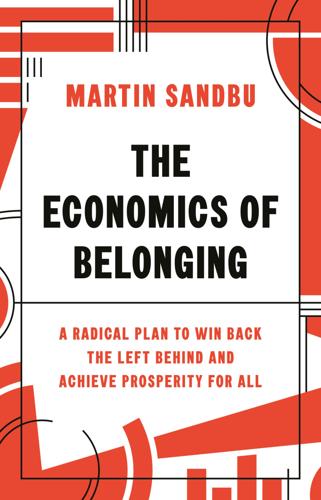
The Economics of Belonging: A Radical Plan to Win Back the Left Behind and Achieve Prosperity for All
by
Martin Sandbu
Published 15 Jun 2020
Raghuram Rajan, Fault Lines: How Hidden Fractures Still Threaten the World Economy, Princeton, NJ: Princeton University Press, 2010. 13. Irving Fisher, “The Debt-Deflation Theory of Great Depressions,” Econometrica 1, no. 4 (1933): 337–57; Richard Koo, “Balance Sheet Recession Is the Reason for ‘Secular Stagnation,’ ” VoxEU, 11 August 2014, https://voxeu.org/article/balance-sheet-recession-reason-secular-stagnation. 14. See Robert Shiller, Finance and the Good Society, Princeton, NJ: Princeton University Press, 2012, for more on equity-like financial products to make people’s lives less risky. 15. Shiller. 16.
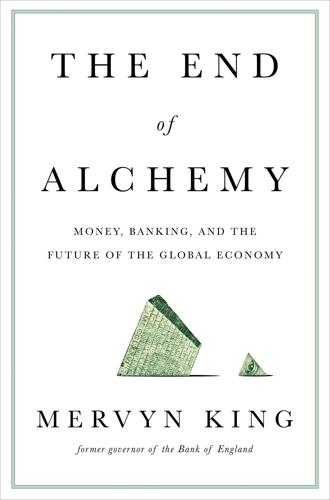
The End of Alchemy: Money, Banking and the Future of the Global Economy
by
Mervyn King
Published 3 Mar 2016
Despite that massive policy stimulus to aggregate demand, economies have been limping along. Recoveries following financial crises have historically tended to be slower than downturns unaccompanied by such crises.2 But there is no unique pattern across different episodes. Diagnoses using expressions such as ‘balance sheet recession’, ‘headwinds’ and ‘secular stagnation’, which have all entered the currency of popular debate, are descriptions of symptoms, not causes.3 What are the underlying drivers of a prolonged period of low demand and weak growth? Why do ‘crises’ lead to a long period of stagnation? To answer those questions requires us to look more deeply into macroeconomics – the study of how the economy operates as a whole.
…
Firth who, as a pupil in 1918, took all ten wickets for Winchester against Eton (reprinted in The Trusty Servant, Winchester College, May 2010). 47 Financial Times, 19 December 2014. 48 Blakey (1839), p. 6. 49 Keynes (1936), p. 383. 50 Ibid, p. 383: ‘Practical men who believe themselves to be quite exempt from any intellectual influence are usually the slaves of some defunct economist.’ 8 HEALING AND HUBRIS: THE WORLD ECONOMY TODAY 1 IMF World Economic Outlook Database, Spring 2015. 2 Reinhart and Rogoff (2009). 3 Central banks have been referring to ‘headwinds’ regularly since 2008; for a number of years the Bank for International Settlements promoted the idea that the risks from rising levels of debt were a threat to stability and that the resulting crisis was a ‘balance sheet recession’ (see various of their annual reports). Lawrence Summers, the Harvard economist and former Treasury Secretary, argued at an International Monetary Fund conference on 16 November 2013 that an age of secular stagnation, in which the equilibrium interest rate was negative, might explain the lack of inflationary pressure before the crisis of 2008 and the lack of growth after it. 4 Keynes himself described his work as a contrast to the ‘classical’ theory of economics.

Crisis Economics: A Crash Course in the Future of Finance
by
Nouriel Roubini
and
Stephen Mihm
Published 10 May 2010
Moreover, the current recession is different from previous ones. This recent crisis was born of excessive debt and leverage in the household sector, the financial system, and even the corporate sector. The recession wasn’t driven by monetary tightening; it was a “balance sheet” recession driven by a staggering accumulation of debt. Recent research by Carmen Reinhart and Kenneth Rogoff suggests that a “balance sheet” recession can lead to a weak recovery, as every sector of the economy “deleverages” and cuts down its debt. This will take a while. Households in the United States and the United Kingdom have saved too little and spent too much.

War and Gold: A Five-Hundred-Year History of Empires, Adventures, and Debt
by
Kwasi Kwarteng
Published 12 May 2014
The ‘catastrophic fall in the money value not only of commodities but of practically every kind of asset’ had been an ‘obvious’ immediate cause of the financial panic. In the modern jargon beloved of today’s economists and journalists, Keynes initially identified the Great Depression as a phenomenon akin to a ‘balance sheet recession’. He continued his assessment that the ‘assets of banks in very many countries – perhaps in all countries with the probable exception of Great Britain – are no longer equal, conservatively valued, to their liabilities to their depositors’. This indebtedness, in Keynes’s analysis, was widespread in the economy, involving both individuals and governments in the whirlpool of insolvency: ‘Debtors of all kinds no longer have assets equal in value to their debts.
…
Index accountancy, 87 Acheson, Dean, 139 Ackley, Gardner, 204–5 Adams, Brooks, 61 Adams, John, 41 Addison, Lord, 150 Adenauer, Konrad, 182, 186–7 Afghanistan Soviet invasion, 227, 237 US invasion, 310, 321, 350 Aislabie, John, 35, 37 Akins, James, 224 Alsace-Lorraine, 120 Amato, Giuliano, 270 American Civil War, 50, 70–6, 80, 109, 135, 190, 214, 219, 333 American colonies and paper money, 5, 41–3, 46 and taxation, 39–40, 103 American Declaration of Independence, 41 American Revolution, 3, 6, 40–2, 50 ‘American System’, 70 American War of Independence, 40–3, 45, 66–7 ‘American Way of Life’, 153, 166 Amsterdam, 25, 28, 36 Andreotti, Giulio, 275 Anglo-American loan, 155–8, 160, 174, 179 Anglo-Egyptian Bank, 89 Anglo-Mexican Mining Association, 56 Annan, Lord, 172 Antwerp, 20, 22 ‘Spanish fury’, 12 Archivo General de Indias, 19 Argentina, 84–5 army, payments to, 26 Asian financial crisis, 289–93, 296 ‘assignats’, 5, 45–8, 50 Atahualpa, 15–17 atomic bombs, 153, 192 Attlee, Clement, 175 Attwood, Thomas, 54 austerity, 342–3, 356 auto manufacturers, 315 autobahns, 133 Aztecs, 13, 22 Bagehot, Walter, 62–5, 79, 99, 127, 164, 170 ‘bailouts’, 329 Baker, Howard, 250 ‘balance sheet recessions’, 129 balanced budgets, commitment to, 6–7, 234, 245, 296, 358 Japan and, 193–4 US and, 162–3, 168–70, 202–4, 207, 209, 333 Bancor, 140, 142 Bank Act, 59, 61, 64 bank bailouts, 331–3 bank failures, 56, 62–5, 127 Bank of Amsterdam, 28, 30 Bank of England Bagehot and, 64–5 bankruptcy of serving Governors, 57–8, 65 and Barings crisis, 85 compared with Bank of Japan, 195–6 conversion of dollar holdings, 217–18 conversion of government debt, 34 and devaluation, 178–81 election of directors, 64–5 and ERM departure, 270–2 establishment of, 3, 24–5, 28 and Gold Pool, 212 gold reserves, 85, 90, 92 as lender of last resort, 49 nationalization of, 171, 178 and outbreak of First World War, 92, 144 quantitative easing, 342–3 resumption of gold payments, 50–4 sole issuer of paper money, 59–60 and South Sea Bubble, 35 suspension of gold payments, 3, 48–50, 53, 61, 144 Bank of France, 48, 85, 272 Bank of Japan, 195–7, 199–200 Bank of Japan, 289 bank runs, 290 Bankers Trust, 121 banking regulation, 351 ‘Banking School’, 64 banking union, proposed European, 351 banks, Japanese, 195–6, 199–200 Banque Générale, 30, 33 Barclays Bank, 82 Baring, Sir Francis, 49–50, 79 Barings Bank, 49, 83–5, 91 Barnes, Fred, 311–12 Bear Stearns, 328 Beck, Sir Justus, 37 Belgium, 174, 280 Bell, Clive, 91 Berlin, Isaiah, 233 Berlin, post-war, 184–6 Berlin stock market, 122 Bernanke, Ben, 126–7, 327, 343 Bernstein, Edward, 139 Bethlehem Steel Corporation, 106–7 Bevin, Ernest, 183 Biddle, Nicholas, 68 ‘big government conservatism’, 311–12, 321 Bild, 275 ‘bimetallism’, 77 Birmingham manufactures, 50 Bischoffsheim and Goldschmidt, 89 Bizet, Georges, 19 ‘Black Friday’, 76, 259 Blackburn, Robin, 325 Blinder, Alan S., 304 Blodgett, Ralph, 160–1 Bodin, Jean, 20–1 Boehner, John, 349 Bolles, Albert, 42 Bonar Law, Andrew, 109 bond market, growth of, 317 bondholders, 52–3, 71–2, 172 Boothby, Robert, 141–2, 149 Bovard, James, 310 Bowie Bonds, 324–5 Bracegirdle, Anne, 27 ‘Bradburies’, 92 Brady, Nick, 269 Brand, Robert, 109 Brandon, Henry, 219–20 Brazil, 350 Bretton Woods Agreement, 2, 4, 138–5, 149–50, 155–6, 158–60, 216, 351 collapse of, 217, 219, 226, 234, 299, 356, 359 and dollar link to gold, 140–4, 149–50, 167–70, 208–12, 250–1 and European monetary union, 263, 273 and exchange rates, 140–4, 149–50 and ‘fundamental disequilibrium’, 140, 144 and Japan, 197, 200–1 Bridges, Sir Edward, 145, 174–5, 179 Bright, John, 246 Britain bubble of 1825, 54–7, 61 decline in world status, 145, 147, 176, 181 deflation, 54–5, 115 departure from gold standard, 129, 131–2, 206 Edwardian complacency, 82–3 ERM entry and departure, 266–72 and European monetary union, 263–4 First World War finance, 102–5, 108–9 food rationing, 182 gold reserves, 167, 227 move to paper money, 48–51, 53–4, 135 national debt, 6, 84, 93, 105, 108–9, 147–8, 295, 341–2, 352, 355 overseas investments, 101, 109, 171 overseas loans, 105, 107–8 PSBR, 244 quantitative easing, 342–3 return to gold standard, 109, 111–15, 118–19, 123, 142–3, 181 suspension of gold standard, 92–3, 98, 107–8, 144 war debt, 144–5 British Commonwealth, 156, 176 Brown, Gordon, 331–3, 351 Bryan, William Jennings, 77, 107 Buchanan, Patrick, 285–6 Buenos Ayres Water Works Company, 85 Bundesbank, 187, 264, 266–7, 270, 272–3 Burke, Edmund, 5, 45, 48–9 Burns, Arthur F., 215–16, 218, 233, 235, 239–41 Burns, Terry, 271 Bush, George H.

The Only Game in Town: Central Banks, Instability, and Avoiding the Next Collapse
by
Mohamed A. El-Erian
Published 26 Jan 2016
During presentations to the annual meetings of the IMF and World Bank in Washington, D.C., she referred to the new-normal phenomenon as the “new mediocre.”10 However one labels it, various explanations have been put forward for this unusual and worrisome phenomenon—from the difficulties of escaping a liquidity trap and the challenging aspects of balance sheet recessions to a change in productivity trends, lack of infrastructure investment, the effects of debt overhangs, demography, and “the race against the machines.” These are all factors that, first, hold actual growth below the potential of the economy, and second, act to pull down future potential growth.
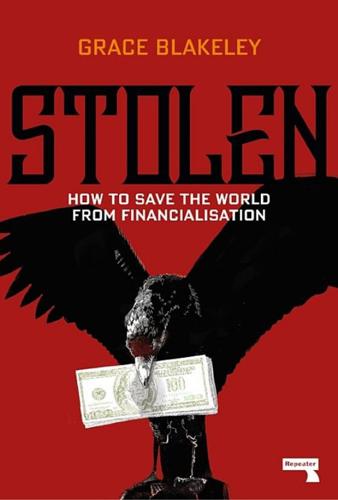
Stolen: How to Save the World From Financialisation
by
Grace Blakeley
Published 9 Sep 2019
Some, like Kenneth Rogoff, argue that slow growth and productivity are to be expected in the wake of a massive financial crisis.20 Households and businesses will all be attempting to deleverage at the same time, creating a Keynesian “paradox of thrift” — the kind of reverse economic multiplier caused when governments, households, or businesses cut their spending. This effect is exacerbated during what Richard Koo calls a “balance sheet recession”, caused by excessive lending. But others argue that the paradox of thrift can’t explain sluggish growth on its own, not least because the slow-down in growth rates appears to have preceded the financial crisis. In fact, the asset price inflation of the pre-crisis period and the large profits generated by the finance sector disguised a long-standing slowdown in other parts of the economy.

Rethinking the Economics of Land and Housing
by
Josh Ryan-Collins
,
Toby Lloyd
and
Laurie Macfarlane
Published 28 Feb 2017
When an economic shock hits or interest rates rise, the economy is then faced with a situation where all sectors of the economy (apart from the government), led by households, seek to deleverage and reduce their debts – ‘rebuilding their balance sheets’ (Koo, 2011). Households reduce their spending and increase their savings, this reduces firms’ profits, leading them to pull back from investment and pay off their debts, and banks contract their lending and rebuild their capital base. A range of studies show that such balance sheet recessions tend to last longer and be deeper than crises that do not involve credit bubbles (e.g. stock market bubbles); and within the universe of recessions caused by credit bubbles, land-related credit bubbles are consistently deeper and last longer (Buyukkarabacak and Valev, 2006; Schularick and Taylor, 2009; Borio et al., 2011; Bezemer and Zhang, 2014; Jordà et al., 2015).
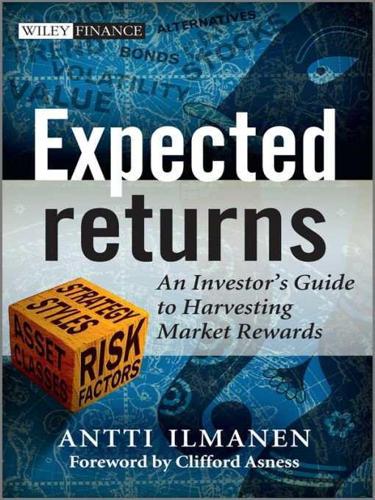
Expected Returns: An Investor's Guide to Harvesting Market Rewards
by
Antti Ilmanen
Published 4 Apr 2011
The signal worked again with the 1989 and 2000 inversions and even with the inversion in the fourth quarter of 2005 and the first quarter of 2006; however, the lag from the last inversion to the beginning of the recession in December 2007 was abnormally long. This empirical relation may be stronger when Fed tightening causes recessions and Fed easing leads the recovery, typical features of postwar business cycles. The story may be different in balance sheet recessions caused by financial de-leveraging, as in the 1930s and 2008, where the Fed has less power to affect the economy. Not surprisingly, many firms have developed composite financial conditions indices that go beyond the monetary policy stance. Such indices have been superior predictors of real activity during the past decade.
…
Expected inflation and ex ante real bond yield have not exhibited much cyclicality. 26.2 TYPICAL BEHAVIOR OF REALIZED RETURNS AND EX ANTE INDICATORS ACROSS DIFFERENT ECONOMIC REGIMES Business cycles differ in their depth and duration. The most important contrast is between typical post-World War II recessions, arguably caused by Fed tightening, and balance sheet recessions, caused by de-leveraging after financial excesses (as in the 1930s and 2000s); the latter are more severe. It is also interesting to observe how the cyclical growth environment intersects with other key drivers of asset returns, such as inflation and volatility. I create three composite dummy series—real growth, inflation, and volatility—and document average realized asset returns and proxies for ex ante returns in relevant data subsets.
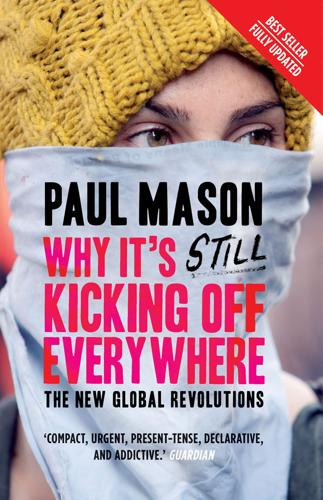
Why It's Still Kicking Off Everywhere: The New Global Revolutions
by
Paul Mason
Published 30 Sep 2013
But, as I argued in the first edition of this book, there is one powerful factor militating against a return to stability and order: the economy. Europe’s great slide backwards, beginning in October 2011, as the G20 summit at Cannes ended in paralysis, has dragged the world economy backwards. In a balance-sheet recession, where recovery is impaired by overhanging debts, all policy can do is to keep the patient alive. Sustained recovery can only begin when the debt mountains are diminished—either by inflation, currency wars or aggressive defaults. In turn, each of these shatters the basis of the old economic order: inflation wipes out the savings of the salaried workforce and the middle class; currency wars trigger the break-up of globalization; default—by states, banks and individuals—reduces parts of the finance system to rubble.

Red Flags: Why Xi's China Is in Jeopardy
by
George Magnus
Published 10 Sep 2018
It will reform in its own ways, but focus mainly on administrative and bureaucratic measures designed to increase the operational efficiency of enterprises, and organisational changes to make various levels of government work better. We shall have to reserve judgement as to whether China’s way will succeed in keeping a balance sheet recession at arm’s length indefinitely, and in developing industrial and engineering successes into transformative and commercialised technologies that set global standards. My hunch is that it will come up short. Conscious that this sceptical view will not find favour everywhere, we can, however, all agree that if China succeeds in avoiding the middle-income trap, it would be the first authoritarian country or dictatorship to do so. 8 TRADE DOGS OF WAR When Mark Antony utters the words ‘let slip the dogs of war’ after the assassination of Julius Caesar, he is thought to be referring to devices in civilised societies that allow or inhibit war.
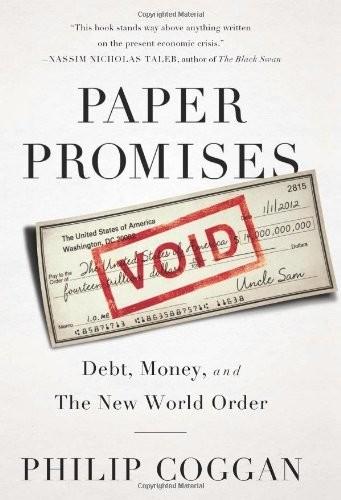
Paper Promises
by
Philip Coggan
Published 1 Dec 2011
As Richard Koo points out in his book, The Holy Grail of Macro Economics: Lessons From Japan’s Great Recession,11 economists had previously thought that if you cut interest rates low enough, people would always borrow. With rates at 0.5 per cent, businesses would surely be able to find profitable projects that earned more. But Japan showed that was not necessarily the case. In Koo’s view, Japan suffered a balance-sheet recession, in which companies found that their assets were worth less than their debts. The last thing they wanted was to borrow any more. Instead, low interest rates simply made it easier for them to service, and eventually reduce, their debts. Japan is also an example of an ageing society, one where the retired cohort is growing faster than the working population, and where the overall population is starting to shrink.
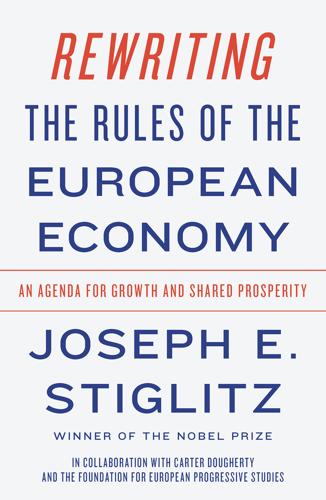
Rewriting the Rules of the European Economy: An Agenda for Growth and Shared Prosperity
by
Joseph E. Stiglitz
Published 28 Jan 2020
In 2014, the percentage of SMEs that applied for a bank loan and got everything they asked for was 78 percent in Austria, 75 percent in Germany, 77 percent in France, and 80 percent for Denmark, but 24 percent in Greece, 54 percent in Italy, and 53 percent in Spain. In 2009, the same figure was 33 percent for Greece, 62 percent for Portugal, and 50 percent for Spain. ¶ That was why the 2008 recession was often referred to as a balance-sheet recession, but it was, of course, much more than that. # As we noted in Chapter 2, the Single Market without deposit insurance and other elements of a banking union meant that money flowed out of the crisis countries, and especially out of their banks, necessitating cutbacks in bank lending. Reforms and institutional innovations, such as the ESM and the banking union, have been halting and have still not adequately addressed the underlying problems. ** EFSI resources are made up from a €26 billion guarantee funded from the European Union’s budget, complemented by €7.5 billion of the European Investment Bank’s capital.

The Blockchain Alternative: Rethinking Macroeconomic Policy and Economic Theory
by
Kariappa Bheemaiah
Published 26 Feb 2017
International Monetary Fund. King, M. (2006). Trusting in Money: From Kirkcaldy to the MPC. The Adam Smith Lecture. London: Bank of England. Kocherlakota, C. A. (2014). Internal debt crises and sovereign defaults. Journal of Monetary Economics, Elsevier, vol. 68(S) , S68-S80. Koo, R. (2014). The Escape from Balance Sheet Recession and the QE Trap: A Hazardous Road for the World Economy. Wiley. Retrieved from http://www.eunews.it/docs/koo.pdf Luigi Buttiglione, P. R. (2014). Deleveraging? What Deleveraging? Geneva: International Center for Monetary and Banking Studies (ICMB). Michael McLeay, A. R. (2014). Money creation in the modern economy.

Adam Smith: Father of Economics
by
Jesse Norman
Published 30 Jun 2018
There are, then, both specific and general channels within asset markets which link asset price inflation, credit growth and profitability. These make asset markets intrinsically unstable, this instability can lead to dangerously self-reinforcing cycles of boom and bust, and these can in turn inflict horrendous damage on the wider economy. This is exactly what happened in the 2008 crash. This was a ‘balance-sheet’ recession: not a recession of the more frequent and familiar kind, driven by falling profitability across the business cycle, but a fundamental shift in asset values, triggered by a collapse in the housing market and in due course spreading from the US and UK to affect much of the wider global economy.

The Default Line: The Inside Story of People, Banks and Entire Nations on the Edge
by
Faisal Islam
Published 28 Aug 2013
Those who say Britain should ease off on dealing with its debt, I think, are now on the margins of the debate.’ Mr Osborne made this remark at a time when his party had slumped in the polls after the disastrous 2012 Budget following the scrapping of the 50p tax rate. The poor performance of the economy, he said, was all down to the overhang of debt in the private sector, and the drawn-out ‘balance sheet recession’ that followed. So why did he follow the advice of his forecasters that the economy would be enjoying strong growth through this time? Britain was enduring the worst recovery in GDP terms on record. All of its main economic counterparts had regained the ground lost in the recession with ‘V-shaped’ recoveries.